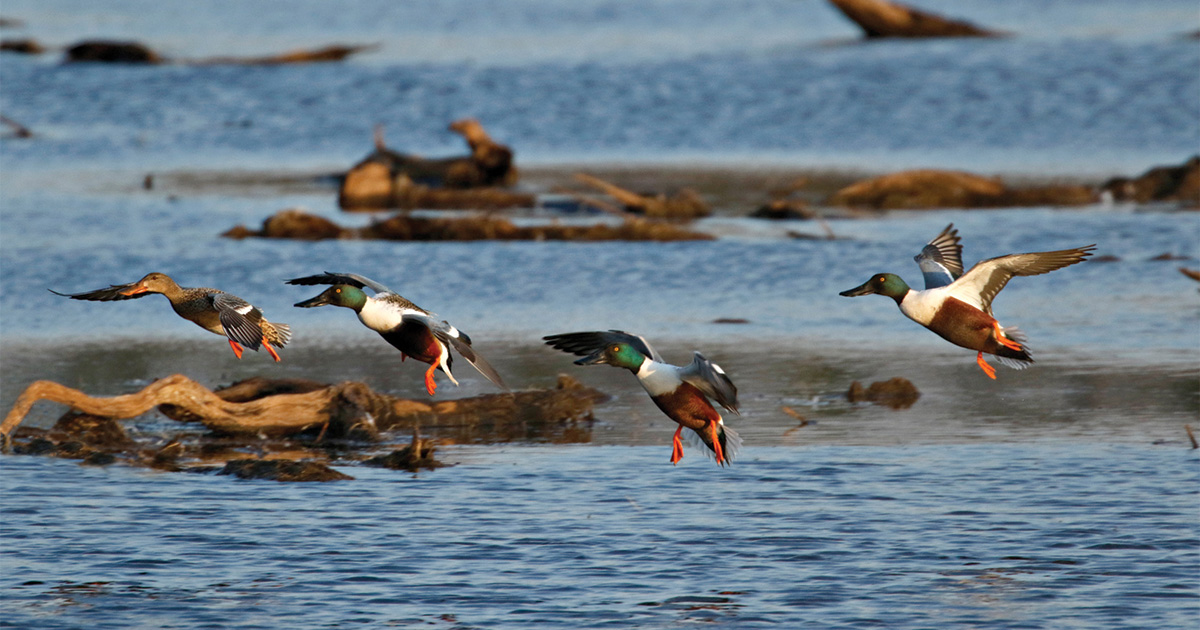Migration Alert: California Hunters Look for Strong Finish to Difficult Season
January 23, 2024 – Pacific Flyway – California
January 23, 2024 – Pacific Flyway – California

For many California waterfowlers, a combination of factors has contributed to a difficult year: warm weather, a delayed migration, and 500,000 acres of flooded rice fields.
Warm weather and the delayed migration go together. Until the recent freeze in Idaho and Washington, many ducks and geese simply didn’t push south. When the birds did move, they found huge expanses of harvested rice topped with water—more than twice the amount from the previous year—and spread out.
There is no shortage of birds now, particularly in the Central Valley, but neither private clubs nor public shooting areas are producing much—except green-winged teal.
“We’re down 25 percent on ducks for our club in the Butte Sink,” said one field scout who preferred to remain anonymous. “At long last, the teal have shown up. There has been nothing else.”
Some big money clubs even shut down for part of the season for a lack of birds.
Similar reports come from so-called rice blinds—mostly seasonal rentals—from Richvale to Dingville, in the Sacramento Valley, where teal have carried the day. Even wigeon and shovelers are scarce, with mallards being almost nonexistent. Delevan National Wildlife Refuge tops the public areas in terms of success, yielding gadwalls, greenwings, and shovelers.
In the Yolo Bypass, above and below the state wildlife area between Davis and Sacramento, greenwings are the ticket. Northern pintails display flashy courtship flights, but the limit is one per day. When the wind blows, squadrons of canvasbacks power through the rice checks.
On any given day, hunters will observe many more geese—whitefronts, snows, and Ross’s geese—than they will encounter ducks. However, without a damp fog, goose hunting success has been way down from 2022−23. On some public hunting areas, the take is down about 80 percent.
Private clubs on the Suisun Marsh as well as Grizzly Island Wildlife Area have been producing consistent bags of greenwings, wigeon, and shovelers.
The best shooting for most of the season has been in the Grasslands of western Merced County, where teal and ring-necked ducks often provide limits.
San Joaquin Valley hunters have had to contend with Tulare Lake, which is usually dry. However, the massive, shallow expanse is now holding water due to last winter’s unprecedented rainfall, providing rafting areas for hordes of ducks. Only nearby Kern National Wildlife Refuge, which shoots only twice a week, has boasted solid scores on greenwings and shovelers.
On a positive note, if the delayed migration continues to build, hunting could improve the final days of the season. That is, of course, if the anticipated “pineapple express” doesn’t blow out rivers and disperse birds even more.
With the regular season closing on Jan. 31, don’t forget the following after-season opportunities: Youth Hunts, Feb. 3-4; Veteran’s Hunts, Feb. 10-11; Late-Season Goose Hunts, Feb. 17-23.
Stay up to date with the latest migration information.